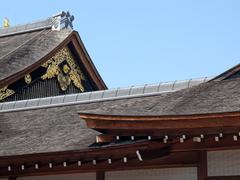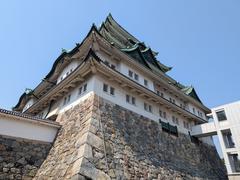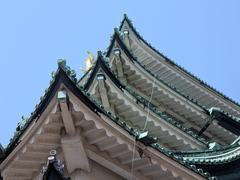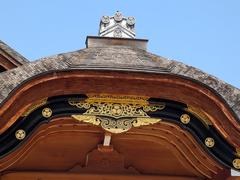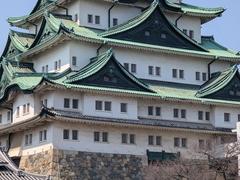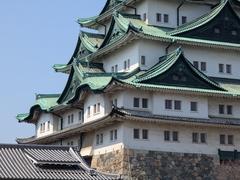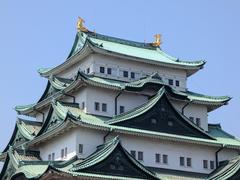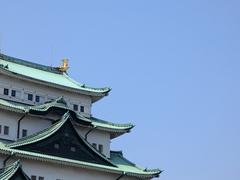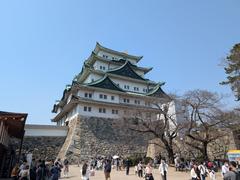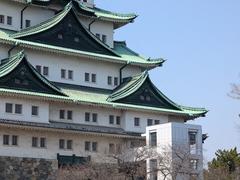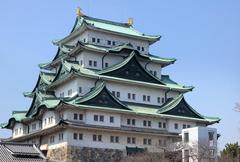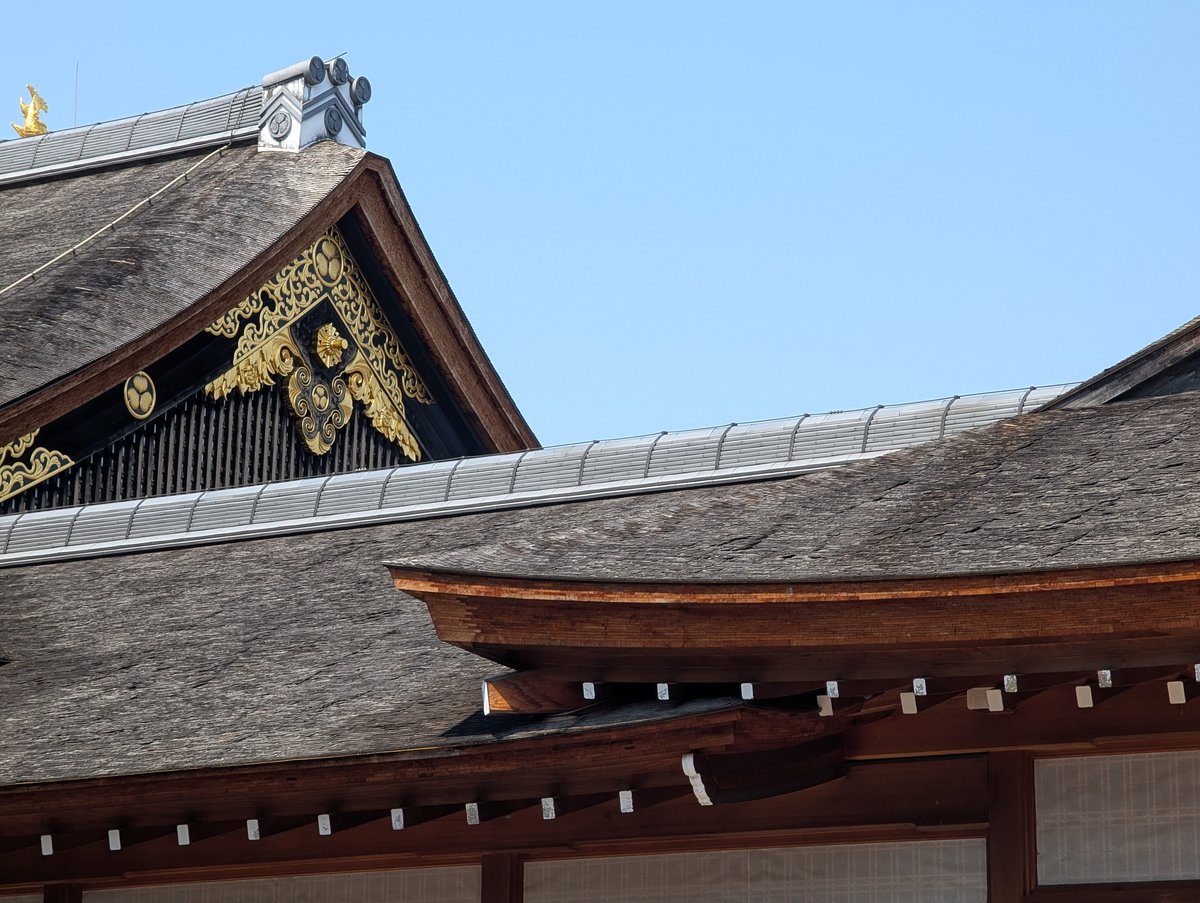
Nagoya Castle Visiting Hours, Tickets, and Historical Sites Guide
Date: 14/06/2025
Introduction: The Legacy of Nagoya Castle
Nagoya Castle is an enduring symbol of Japan’s feudal era, architectural sophistication, and cultural resilience. Centrally located in Nagoya, Aichi Prefecture, it was originally constructed in the early 17th century by Tokugawa Ieyasu to command strategic routes and solidify Tokugawa power in central Japan (Nagoya Castle Official Site). The castle is renowned for its iconic golden shachihoko roof ornaments—mythical tiger-headed carp believed to protect against fire—which have become emblems of Nagoya’s cultural identity.
Although Nagoya Castle was heavily damaged during World War II, extensive restoration efforts, including the authentic reconstruction of the Hommaru Palace, have re-established its significance as a site where visitors can immerse themselves in Japan’s history and tradition (Lexion13 Guide; Nagoya Buzz). This guide presents comprehensive information on Nagoya Castle’s history, practical details for visiting, major attractions, events, and tips for an enriching experience.
Table of Contents
- History and Origins
- Architectural & Cultural Highlights
- Visiting Information
- Events and Seasonal Attractions
- Frequently Asked Questions (FAQ)
- Summary & Visitor Tips
- Further Reading and Official Resources
History of Nagoya Castle
Early Construction and Tokugawa Authority
Construction began in 1610 under Tokugawa Ieyasu, following his consolidation of power after the Battle of Sekigahara. The site was selected for its strategic position guarding the Tōkaidō road, a crucial route connecting Kyoto and Edo (Nagoya Castle Official Site). The castle’s immense stone walls and moats were constructed with the labor and support of 20 daimyo, each leaving their mark on the fortress (Adventure Backpack). The main keep, completed in 1612, was the largest of its kind and adorned with the golden shachihoko.
The Owari Tokugawa Clan and Edo Period
For over two and a half centuries, Nagoya Castle was the seat of the Owari branch of the Tokugawa family—one of the most powerful Tokugawa houses. The surrounding castle town, created through the relocation of people from Kiyosu, became the foundation for modern-day Nagoya (Nagoya Castle Official Site). The Hommaru Palace, completed in 1615, served as the lord’s residence and administrative center, famed for its opulent interiors and artistic sliding door paintings.
Wartime Destruction and Modern Restoration
In May 1945, air raids devastated Nagoya Castle, destroying the main keep and Hommaru Palace. However, many valuable artifacts, including sliding doors and paintings, were saved (Nagoya Castle Official Site). Restoration began in 1959 with a concrete reconstruction of the main keep, while ongoing efforts focused on authenticity have recently culminated in the authentic rebuilding of the Hommaru Palace using traditional materials and techniques (Nagoya Is Not Boring).
Architectural and Cultural Highlights
Main Keep (Tenshu) and Golden Shachihoko
The five-story main keep is a landmark of Nagoya. Topped with two gold-leafed shachihoko, each over 2.5 meters tall and weighing more than a ton, the keep symbolizes both the castle’s defensive prowess and the city’s identity (Wikipedia). As of 2025, the main keep remains closed to the public due to earthquake safety concerns, with plans for a wooden reconstruction underway (Japan Travel).
Hommaru Palace
Once destroyed in WWII, the Hommaru Palace has been meticulously reconstructed and reopened in 2018. Its interiors feature golden fusuma-e (sliding door paintings), tatami audience halls, and fine Edo-period architecture (Japan Travel). The palace is a highlight for visitors seeking authentic historical ambiance.
Turrets, Gates, and Gardens
Surviving turrets such as the Tatsumi Yagura (Southeast Turret) are designated Important Cultural Properties, showcasing Edo-period defensive architecture. The Omote Ni-no-mon and other gates, with their formidable stonework and iron-clad doors, demonstrate the castle’s military function (Nagoya Castle Official Site).
The Ninomaru East Garden, restored using historical drawings, features tranquil ponds, seasonal flowers, and a reconstructed tea house. It’s a designated National Place of Scenic Beauty, perfect for relaxation and photography (Wikipedia).
Visiting Information
Opening Hours
- Standard: 9:00 AM – 4:30 PM (last entry at 4:00 PM)
- Seasonal Variations: Hours may extend during cherry blossom season and festivals. Always check the official website for updates.
- Annual Closure: December 29 – January 1 (Directionally Challenged Traveler).
Tickets and Admission
- Adults: 500 yen
- High school and university students: 300–350 yen (depending on category)
- Children (junior high and younger): Free
- Discounts: Available for groups and for visitors in traditional attire during festivals (MATCHA)
- Where to Buy: At the entrance or online via the official ticketing page.
Accessibility
- Wheelchair Access: Most major areas are accessible, including ramps and elevators. Stone paths may be uneven; assistance is available upon request.
- Signage: Japanese, English, and Chinese.
- Restrooms: Accessible restrooms in multiple locations (GLTJP).
Getting There
- Subway: Meijo Line to Shiyakusho Station (Exit 7), then 5 minutes on foot.
- Sightseeing Bus: Me~guru Nagoya Sightseeing Bus stops at the Main Gate.
- Car: Limited parking near Main and East Gates; public transportation is recommended (Directionally Challenged Traveler).
Facilities and Services
- Restrooms and coin lockers near entrances.
- Gift shops with shachihoko souvenirs and local crafts.
- Restaurants such as Kishimen-tei, offering regional specialties.
Events and Seasonal Attractions
- Cherry Blossom Festival (Spring): Over 1,000 cherry trees bloom; evening illuminations and food stalls (Matcha).
- Nagoya Castle Summer Festival (August): Bon Odori dancing, live performances, yukata discounts, and festival foods (MATCHA).
- Autumn Festival: Features chrysanthemums and vibrant foliage (Agate Travel).
- Winter Events: Samurai performances and cultural displays.
- Tea Ceremonies: In the Ofukemaru area during special occasions.
- Samurai and Ninja Performances: Nagoya Omotenashi Bushotai appear on weekends and holidays (Matcha).
Frequently Asked Questions (FAQ)
Q: What are the current visiting hours?
A: 9:00 AM to 4:30 PM (last entry 4:00 PM); check website for festival hours.
Q: How much are tickets?
A: Adults: 500 yen; students: 300–350 yen; children (junior high and younger): free.
Q: Is the main keep open?
A: No, it remains closed due to restoration work and earthquake safety upgrades.
Q: Is Nagoya Castle wheelchair accessible?
A: Yes, with ramps and elevators, though some areas may be challenging.
Q: Can I take photos?
A: Photography is allowed in most areas; flash and tripods may be restricted.
Q: Are guided tours available?
A: Free English tours daily at 12:30 PM; private tours with advance booking.
Q: What is the best time to visit?
A: Spring (cherry blossoms) and autumn (foliage and festivals) are especially popular.
Summary & Visitor Tips
Nagoya Castle stands as a vibrant testament to Japanese history, blending feudal architecture, lush gardens, and ongoing cultural events. Its central location, affordable admission, and accessible facilities make it ideal for all visitors. To enhance your experience:
- Visit during cherry blossom or festival seasons for special events.
- Arrive early to avoid crowds, especially on weekends and holidays.
- Explore the Hommaru Palace for authentic Edo-period interiors.
- Check restoration updates and seasonal schedules on the official website.
For a deeper dive, download the Audiala app for guided tours and up-to-date local tips.
Further Reading and Official Resources
- Nagoya Castle Official Site
- Lexion13 Guide: Ultimate Guide to Nagoya Castle History, Tours, and Visitor Tips
- Nagoya Buzz: Nagoya Castle Overview
- Japan Insides: Nagoya Castle Feature
- Nagoya Is Not Boring: Visit Nagoya Castle
- Japan Travel: Nagoya Castle Details
- MATCHA: Nagoya Castle Festivals and Visitor Tips
- Wikipedia: Nagoya Castle
- GLTJP: Nagoya Castle Directory
- Directionally Challenged Traveler: Is Nagoya Castle Worth Visiting?
- Agate Travel: Nagoya Weather
Visit Nagoya Castle for an unforgettable journey through Japan’s storied past, and let its golden shachihoko and blooming gardens inspire your sense of wonder.
